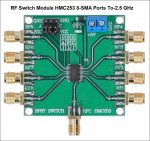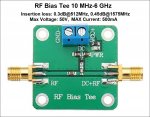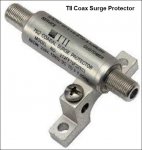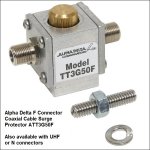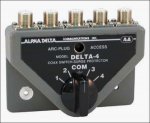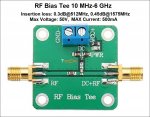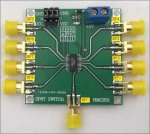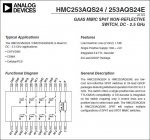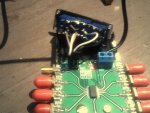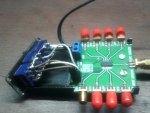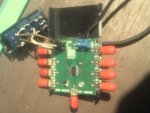I was wondering if any one was using one of the 8 position antenna switches from AlieExpres?
/www.aliexpress.com/item/1005002120003412.html?spm=a2g0s.8937460.0.0.816c2e0ePgpkbr

I bought one and have been playing with it a bit. I do like it although I have found a discrepancy between the chip and the way it is working. The chip diagram has all switch positions open when not engaged, no power. In reality all switches go closed connecting all ports when power is removed.
I think I can use this to some advantage for static discharge protection if I ground one of the antenna leads through a resistor to ground. All ports have a capacitor to isolate it from DC so the grounded port would only help with an impulse such as a near lightning discharge.
After a recent near lightning strike taking out some of my equipment. I have decided to upgrade my now non existent lightning protection. My old method of just unhooking it only works as well as a my memory.
For now I plan on putting the switch near my outside antenna collection point to eliminate several coaxial runs.
I have ordered a couple of the
DC Bias 10-6000MHz 6GHz RF Tee Broadband Microwave DC Bias Blocker
DC Bias 10-6000MHz 6GHz RF Tee Broadband Microwave DC Bias Blocker from AlieExpres
The way I plan on providing a DC ground for the antennas is to put one of the biasT on the input line of the antenna switch with the DC+RF side connected to the 8 position switch. The biasT power connector will then be grounded. a blocking capacitor is in line before going on to the radio.
Joe
/www.aliexpress.com/item/1005002120003412.html?spm=a2g0s.8937460.0.0.816c2e0ePgpkbr

I bought one and have been playing with it a bit. I do like it although I have found a discrepancy between the chip and the way it is working. The chip diagram has all switch positions open when not engaged, no power. In reality all switches go closed connecting all ports when power is removed.
I think I can use this to some advantage for static discharge protection if I ground one of the antenna leads through a resistor to ground. All ports have a capacitor to isolate it from DC so the grounded port would only help with an impulse such as a near lightning discharge.
After a recent near lightning strike taking out some of my equipment. I have decided to upgrade my now non existent lightning protection. My old method of just unhooking it only works as well as a my memory.
For now I plan on putting the switch near my outside antenna collection point to eliminate several coaxial runs.
I have ordered a couple of the
DC Bias 10-6000MHz 6GHz RF Tee Broadband Microwave DC Bias Blocker
DC Bias 10-6000MHz 6GHz RF Tee Broadband Microwave DC Bias Blocker from AlieExpres
The way I plan on providing a DC ground for the antennas is to put one of the biasT on the input line of the antenna switch with the DC+RF side connected to the 8 position switch. The biasT power connector will then be grounded. a blocking capacitor is in line before going on to the radio.
Joe


